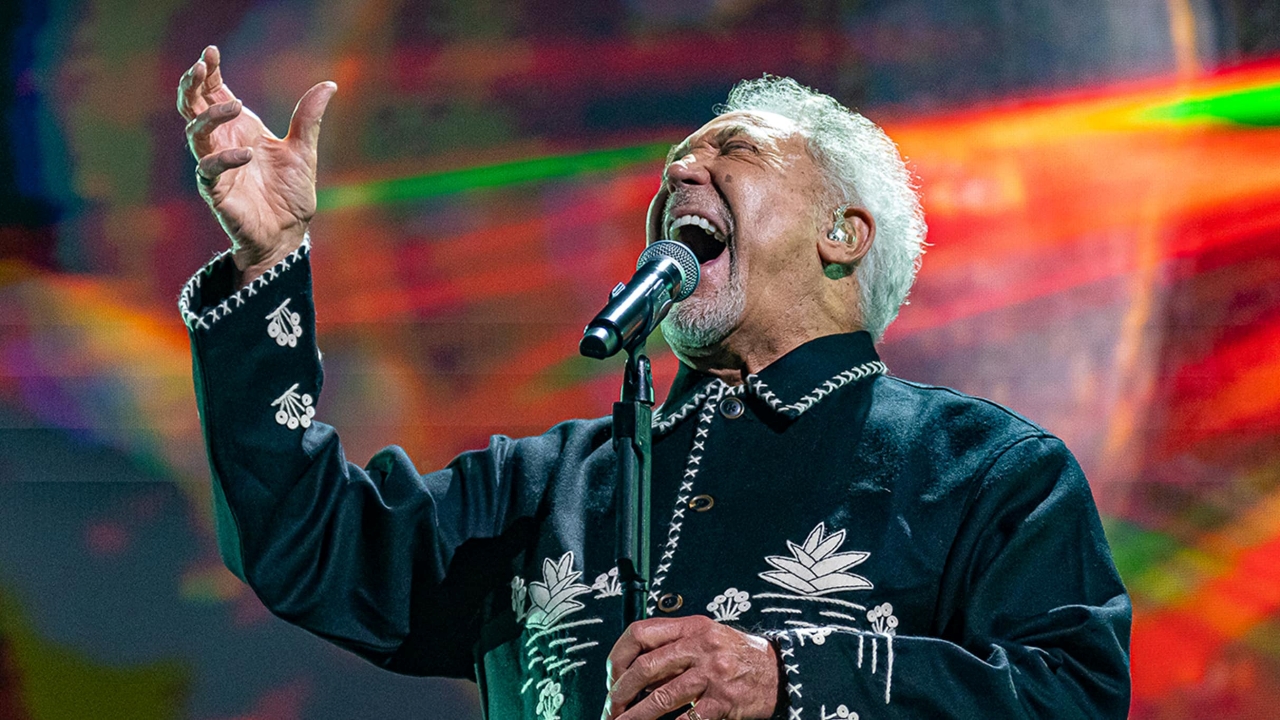🌆 When the Tiger Arrived in the Desert
In the late 1960s, Las Vegas was quickly transforming into the entertainment capital of the world. The Rat Pack ruled the casinos, neon lights burned through the desert nights, and showrooms overflowed with glamour.
And then came a Welshman named Tom Jones — loud, fearless, and completely unlike anyone the Strip had seen before.
Jones made his Vegas debut in 1967, still riding the success of It’s Not Unusual. At the time, most singers performed restrained shows in tuxedos and bowties. Tom arrived in tight tailored suits, swaggering across the stage like a rock star and turning lounge music into a contact sport.
The crowd didn’t know what hit them — and they loved it.

🔥 A Voice Built for the Strip
Vegas was the perfect playground for Tom Jones. The big-band arrangements, brass sections and high-energy show formats were built to amplify his booming voice.
What really set him apart, though, was pure physicality. While other singers stood still and crooned, Tom rolled his shoulders, strutted across the stage, let out screams like James Brown, and treated every performance like a battle he intended to win.
Women shouted his name. Men stood up in disbelief.
It didn’t take long before he became the highest-paid performer on the Strip — and, before long, a resident headliner.
🧺 The Birth of a Wild Tradition
During one of his early Vegas shows, a woman in the crowd famously threw her underwear on stage.
Tom paused for a split second, then burst out laughing — and kept singing.
By the next night, everyone was doing it.
It wasn’t vulgar. It wasn’t staged. It was a spontaneous tradition that symbolized the electric connection between the performer and his audience.
Instead of turning away from the madness, Tom leaned into it.
He’d wink, pick up the flying lingerie, drape it over the mic stand — and keep singing like nothing had happened.
That was the magic of 1970s Vegas: anything could happen, and Tom Jones always knew how to handle it.
💰 Record Paychecks, Sold-Out Nights
Tom’s residency became legendary. He sold out weeks at a time. Newspapers wrote about how he brought a new kind of life to the Casino circuit.
In 1971, he broke box-office records at the Flamingo Hotel — then broke them again the following year.
By the mid-70s, he was earning $50,000 a night (an enormous figure at the time). But what mattered most was not the money — it was the feeling: Tom Jones had become the king of Las Vegas, standing shoulder to shoulder with the very artists he once admired from afar.
🎤 Every Night Was Different
Unlike many Vegas performers who repeated the exact same set every night, Tom changed things constantly. He mixed ballads with funky covers, added blues improvisations, brought gospel choirs for special nights, even threw in Elvis tributes (often with Elvis sitting in the audience).
Crowds never knew what version of Tom they would get — and that was exactly why they came back again and again.
🤝 Friendship with the Other Kings
Vegas was also the city where Tom built friendships with Elvis Presley, Frank Sinatra, Sammy Davis Jr. and others.
They watched each other’s shows, exchanged stories at 3AM over bourbon, and sometimes even guest-appeared without warning.
One night, Elvis walked on stage mid-song and jokingly tried to “steal” the mic from Tom.
The crowd went insane.
Instead of stopping the song, Tom laughed, gave him the mic — and then grabbed it back to finish the verse.
Two legends. One stage. One unforgettable night.
🕰 The End of an Era — But Not the End of the Flame
By the early 1980s, the golden era of Vegas showrooms began to fade. The city started transforming again. Many Rat Pack-era stars left.
Tom Jones eventually ended his full-time residency — but he never stopped returning.
In interviews, he often said that Vegas taught him how to push himself every night, and that no other stage in the world demanded so much raw energy and charisma.
He still plays there occasionally — and whenever he walks out under those lights, the room remembers what it once felt like.
Video